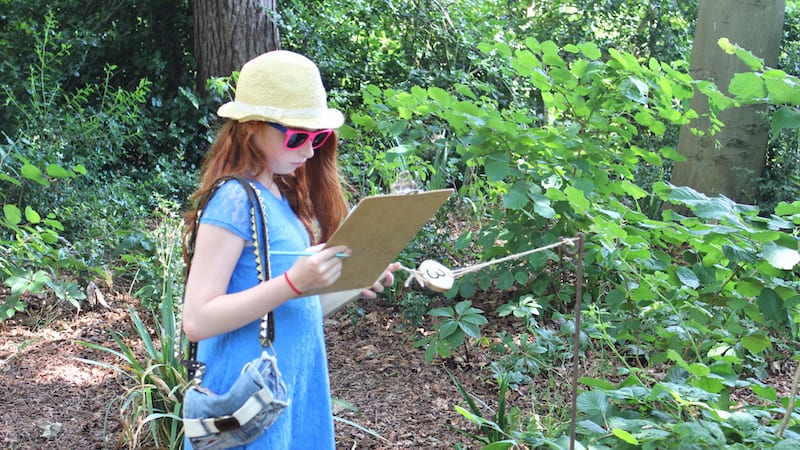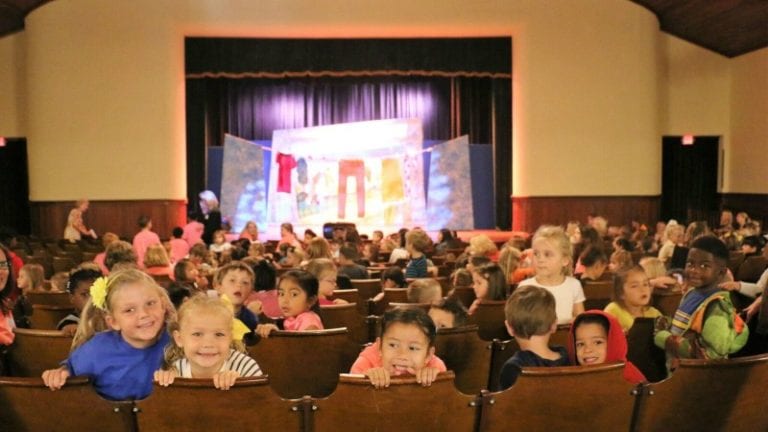It’s first period, so it’s still chilly on the basketball court, but the students are breaking a sweat as they argue about how to finish their project on time. On the nearby soccer field, a light saber battle rages.
I leave the heated discussion to check on the group I’m most concerned about, the five boys I’ve allowed to climb the fence into the woods behind the school. I know they’re on-task and focused, but there are snakes back there in the spring, and it’ll really put a damper on the class period if anybody has to go to the hospital.
My seventh grade Language Arts students are making short films showcasing all the steps of Joseph Campbell’s Hero’s Journey. They’re using their phones (or school cameras, or my phone) to shoot the screenplays they spent last week storyboarding and drafting.
It doesn’t look like school. There’s no standard process. There’s no standard product. Each of my students will learn different things from this assignment. My directors will hone their leadership skills, while other members might learn how to present their ideas in ways that will appeal to their group mates.
Some kids will give command performances on camera, while others shine during the editing process. They’ll all pick up some literary and film vocabulary—archetypes, camera angles, motifs—and they’ll all work on the so-called “soft skills” deemed most necessary in today’s job market; working out their differences, adapting to unforeseen challenges and so on.
It took me a long time to be able to assign projects this open-ended. There were very few guidelines and limitations on what the students could do, and whenever they ask questions, I tried to err on the side of offering them as much freedom as possible.
And I believe it’s working. They’re learning, they’re engaged, they’re excited. I told them we would film everything in class, but I think every group has decided to meet over the weekend and work on it for homework. Surely that counts for something.
Through this process, I’ve learned that, while open-ended assignments are both frustrating and exhilarating, there are a few things that must be in place before attempting one:
1. Administrative support.
Otherwise, when your kids are walking around the school in masks carrying bags of fake blood and contraband cell phones, it’s going to get awkward.
2. A solid rubric.
I broke mine down into what the kids needed to accomplish each day of the project, and that really helped. I also gave them time for team meetings each day at the beginning and end of class, and that helped me to check in with them and see what they needed from me.
3. Faith in both the kids and your assignment.
I let my kids choose their own groups, but warned a few kids beforehand (privately) not to work together. This gave me a lot more freedom; I knew no romantic pairs would be wandering off into the woods for a tryst, and I knew that the kids who egg each other on or have frequent conflicts wouldn’t be working together. I also felt confident enough in my assignment to believe that the kids would be consistently engaged and focused, which I think was accurate.
4. Absolutely ruthlessness when it comes to enforcing expectations.
I let the kids know early on that I could and would pull any kid from any group who was off-task or whose behavior was detrimental to the group. I showed them the alternate assignment and had a colleague ready and willing to take a kid for the class period if needed.
Although I did deduct points from two kids’ grades for an illicit game of soccer, I didn’t have to pull anyone from the project. I think the fact that the kids knew I would remove them from the group if I needed to resulted in general good behavior throughout the project.
5. A tolerance for failure.
When you’re guiding kids through a standardized process to a standardized product, it’s easy to see when things go wrong and correct it. I’ve really had to step back and let the kids figure out their own mistakes this time.
When one group spent a whole class period doing take after take of kids rolling down a hill, I bit my tongue and tried not to watch too anxiously, knowing it would put them behind on their filming. It did, and they spent recess time filming and scaled back their project to make up for it. Letting them make and learn from their mistakes is one of the best gifts I can give them, although it isn’t easy for me.
I’m very lucky to have the freedom to assign projects like this to my students. In the past two weeks, I’ve put miles on my FitBit walking around the school checking on various groups. I’ve bought two boxes of hot tea for my throat, thanks to the cold mornings outside and the repeated shouts of, “Make sure you watch for snakes!”
I’ve also gained some valuable experience and I have big plans for how I’ll continue assignments like this one with all my classes. Hopefully. We’ll see how their films turn out when we screen them on Monday. And whether anybody gets snakebit.

